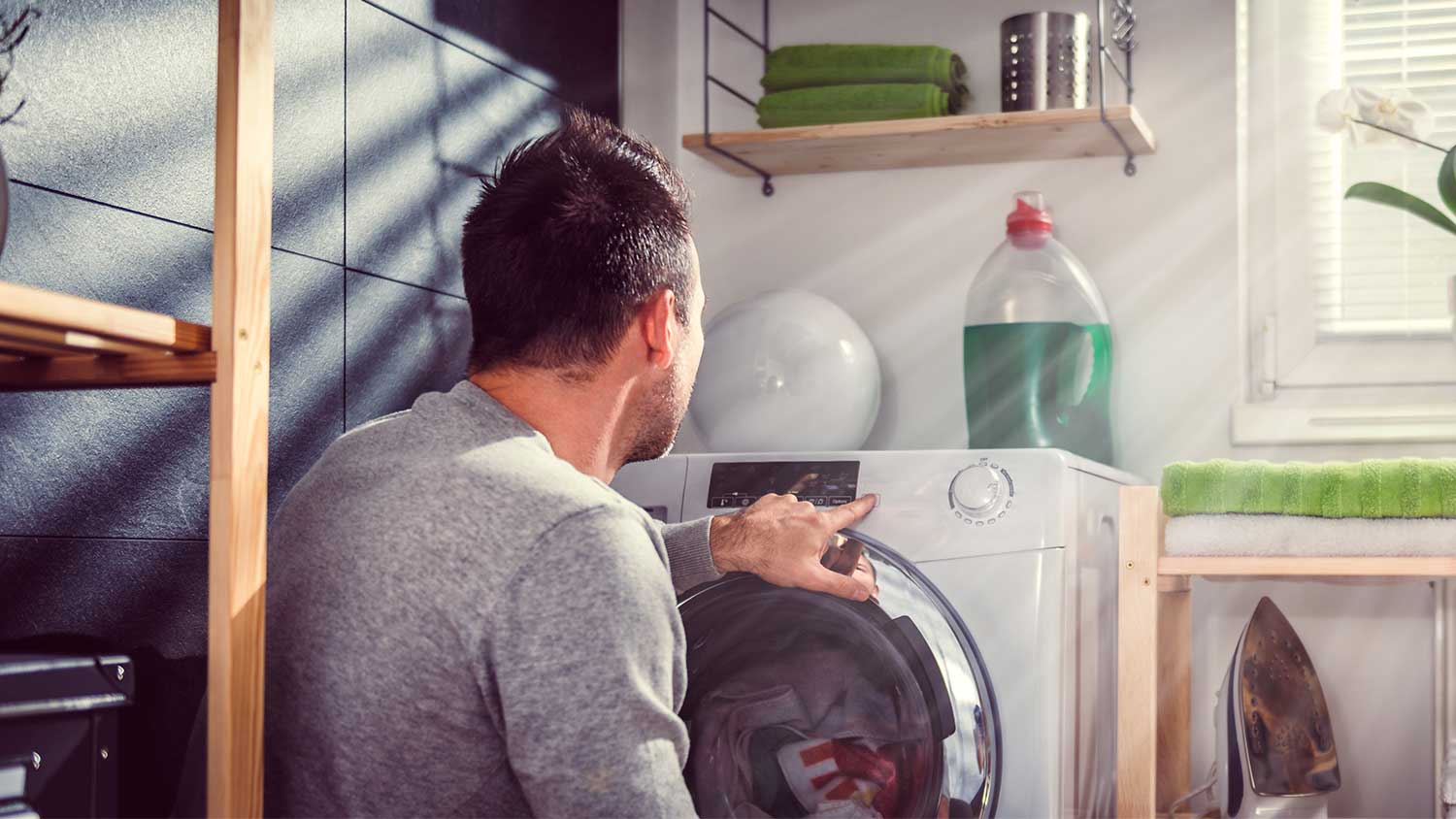
Clean walls are an important part of a well-kept house. Use this wall cleaning cost guide to see what it would cost to hire a professional to get the job done.
Turn that machine sparkling clean


While cleaning your washing machine (the appliance that does the cleaning) might seem counterproductive, it often starts working less efficiently as it becomes grimier. Plus, neglecting to clean the machine may result in lint buildup, clogs, or foul odors. By regularly showing your washing machine some TLC, it'll run better and last longer. Learn how to sanitize and disinfect your machine DIY-style, and in turn, show better maintenance for your washing machine.

First, you’ll want to set the empty washing machine to its highest setting. Depending on your appliance, this may mean setting it to the “whites” or “heavy” cycle.
Pour 1 cup of chlorine bleach into the washing machine tray or the drum, depending on the instructions on your machine.
Set your washer to full, hot rinse, and let it run.
Now, it’s time to disinfect the components. "Cleaning the dispensers and filters eliminates buildup of detergents, dirt, debris, and any bacteria or mold-causing agents,” said Asya Biddle, Angi Expert Review Board member and manager of The Dustbusters, a family-owned and operated janitorial company in Williamsport, PA. “You will find that your laundered clothing will smell better and be overall cleaner."
Remove the bleach dispenser, fabric softener dispenser, filter, and other removable parts from your machine. Among the dispenser and filter, you’ll want to clean the inside of the lid. You can soak all the pieces in soapy water or apply white vinegar with a towel and wipe everything down. Vinegar can be useful for dissolving soap scum and removing mineral deposits.
If you need to get into hard-to-reach areas, use a toothbrush to scrub. Afterward, return each removable piece to its place.
To make sure you remove all the bleach, do one final rinse. This way, you’ll ensure there'll be no bleach residue when you do your next load of laundry.

The final step is to clean your washing machine’s exterior components. This includes the top, front, and sides. In addition, clean the rubber seal around the door.
You can use a combination of chlorine bleach and water and wipe down everything with a towel. Finally, use water to rinse everything clean, and dry it with a cloth.
Front-load washers are more prone to mold and mildew buildup, particularly in the detergent drawer and around the rubber door seal, where small items can get trapped. Be sure to clean these areas thoroughly using a strong cleaner like bleach. After each wash, leave the door open to allow air circulation, which helps prevent mold and foul odors.
While top-load washers are less susceptible to mold, they still need regular cleaning to remove detergent residue and grime. Leaving the lid open after each wash offers the same benefit as with front-loaders, allowing the interior to dry and stay fresh.
Who wouldn’t love coming home to a spotless house without lifting a finger? The same goes for doing laundry in a pristine washer. A local house cleaning service can make that a reality. Cleaning prices depend on the task and your location, ranging from $25 to $80 per hour. You may also want to consider treating yourself to a deep house cleaning, which costs up to $370.
You can DIY clean your washer, but the benefit of hiring a professional is a much cleaner outcome. These experts have seen it all and understand how to tackle mold and detergent residue so your washer feels fresher and functions more efficiently. Plus, paying for these services frees up time to do something more fun.
From average costs to expert advice, get all the answers you need to get your job done.

Clean walls are an important part of a well-kept house. Use this wall cleaning cost guide to see what it would cost to hire a professional to get the job done.

Cleaning tasks can seem overwhelming. Learn how often you should clean your house to keep it looking its best all year long.

Keeping your bathroom clean helps avoid stains, odors, and health risks. Learn how often you should clean your bathroom for best results.

DIY cleaning solutions can be safe and reliable, not to mention cost effective. Use these tips for cleaning with vinegar and baking soda to reap the benefits.

A dusty bedroom surely won’t help you unwind at the end of a long day. Keep dust at bay by following these tips on how to reduce dust in your bedroom.

Life is messy, but when it comes to pee in the house, it takes on a whole new meaning. Read this to learn how to get urine smells out of your couch.